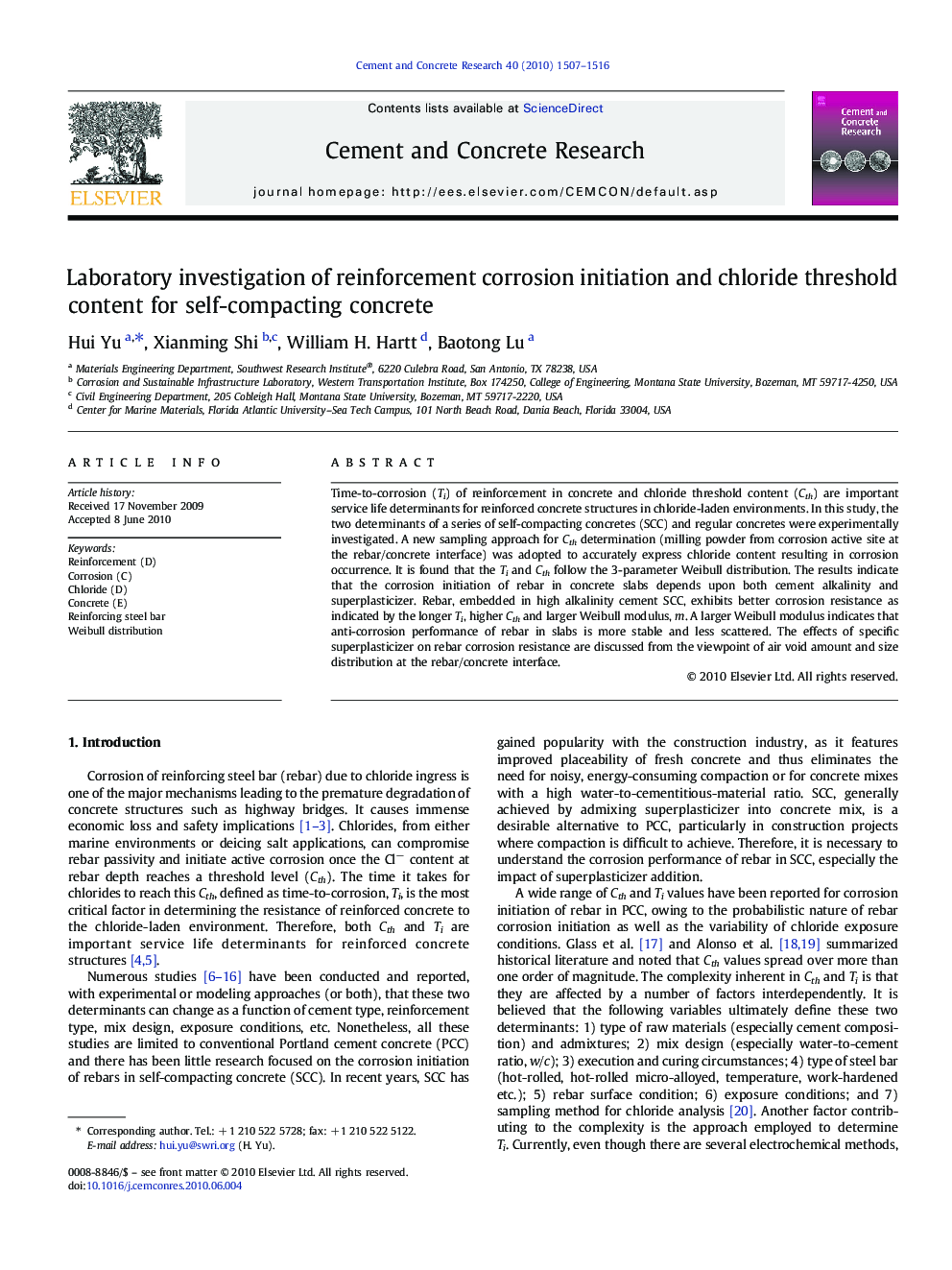| Article ID | Journal | Published Year | Pages | File Type |
|---|---|---|---|---|
| 1457100 | Cement and Concrete Research | 2010 | 10 Pages |
Time-to-corrosion (Ti) of reinforcement in concrete and chloride threshold content (Cth) are important service life determinants for reinforced concrete structures in chloride-laden environments. In this study, the two determinants of a series of self-compacting concretes (SCC) and regular concretes were experimentally investigated. A new sampling approach for Cth determination (milling powder from corrosion active site at the rebar/concrete interface) was adopted to accurately express chloride content resulting in corrosion occurrence. It is found that the Ti and Cth follow the 3-parameter Weibull distribution. The results indicate that the corrosion initiation of rebar in concrete slabs depends upon both cement alkalinity and superplasticizer. Rebar, embedded in high alkalinity cement SCC, exhibits better corrosion resistance as indicated by the longer Ti, higher Cth and larger Weibull modulus, m. A larger Weibull modulus indicates that anti-corrosion performance of rebar in slabs is more stable and less scattered. The effects of specific superplasticizer on rebar corrosion resistance are discussed from the viewpoint of air void amount and size distribution at the rebar/concrete interface.
